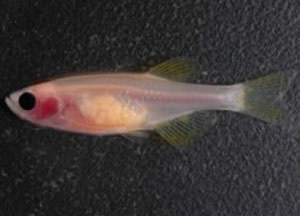Everybody has to die at some point. But fortunately, the death of a cell does not mean the end of the organism, at least for us metazoans.
Indeed, controlled cell death a.k.a apoptosis, or programmed cell death, is an integral part of the biology of all organisms, from nematodes on up. Apoptosis is central to the biological function of higher organisms, and if it goes wrong, diseases can result (I’ll tell you about these in my next article).
This series is intended to give you a Bitesize tour of apoptosis, what is does for us, what happens when it goes wrong and how we study it.
Lets dive straight in with a tour around what apoptosis does in healthy organisms…
Apoptosis in homeostasis
Our cells die and are renewed all the time. Skin cells are a very short-lived cell type, with an average lifespan of two weeks, olfactory neurons are replaced about every six weeks, and red blood cells make it for one hundred days before they are refreshed. In these cases, a cell type specific pool of adult stem cells looks after the timely renewal of cells and keeps them coming at a steady rate.
This system is thoroughly controlled, and it is not surprising that a set of closely monitored, controlled pathways underlie the death of these cells: apoptosis.
Homeostasis in these tissues is thereby established by the combined action of death (apoptosis) and renewal (adult stem cells).
Apoptosis during the immune response
Apoptosis has yet another important use for us, notably through our immune system: Cytotoxic T-Lymphocytes can induce apoptosis in cells that are infected by viruses or issuing threat/damage signals. Death of these cells is critical for controlling intracellular infections.
Additionally, apoptosis is used to rid the body of effector cells after an infection has been cleared, thereby preventing destruction of surrounding healthy cells.
Apoptosis in development
In embryonic development, apoptosis plays a role in tissue patterning; often tissues need to undergo reduction in order to create form. One example is the difference between duck feet and chicken feet: While all developmental pathways are the same, the last step of chicken digit development consists of apoptotic cell death of the cells that connect the digits, thereby destroying the webbing observed in the duck.
Another notable use of apoptosis in development is during metamorphosis in insects: many larval tissues have to die to make place for the adult organs, which often includes quite a makeover of the organism. These are just two of many examples, please see Fuchs&Steller 2011 for an extensive review.
As you can see, apoptosis is not only just useful, it is also necessary for maintaining a happy organism. But what happens when an organism loses control of the process of apoptosis? Stay tuned for the next article when I talk about apoptosis and disease.
References:
- Blankenberg, In Vivo Detection of Apoptosis. Journal of Nuclear Medicine 49 (2008)
- Gavrieli et al, Identification of programmed cell death in situ via specific labelling of nuclear DNA fragmentation. Journal of Cell Biology 119.3: 493-501(1992)
- Fuchs & Steller, Programmed cell death in animal development and disease. Cell 147(4):742-58 (2011)
- Miura, Active participation of cell death in development and organismal homeostasis. Development, Growth and Differentiation 53(2):125-36 (2011)







